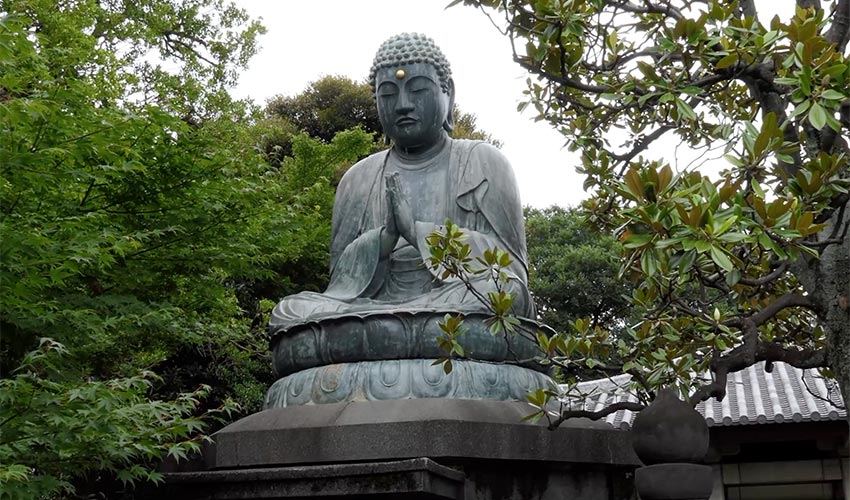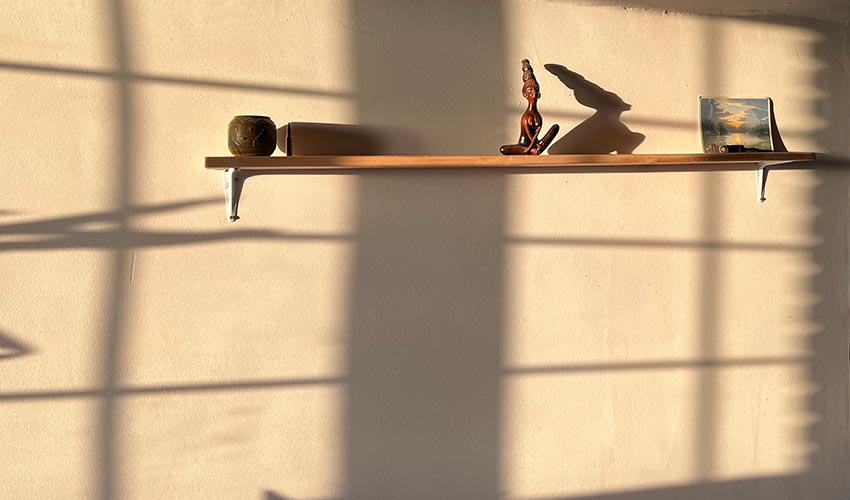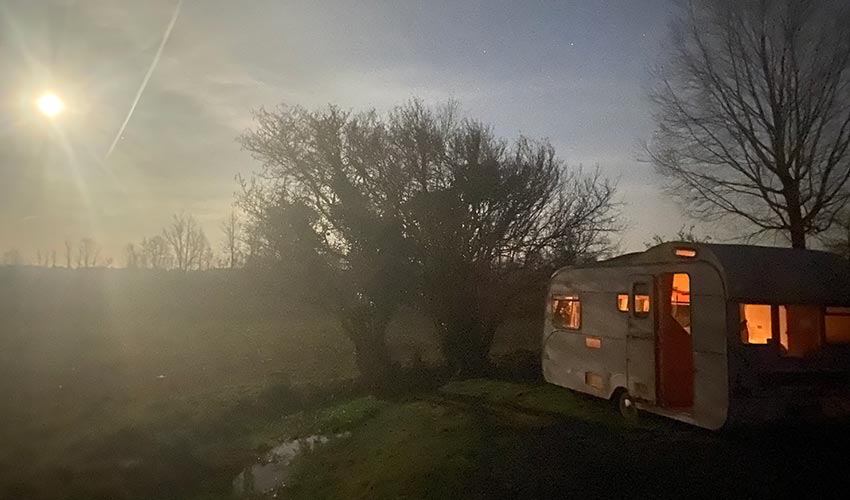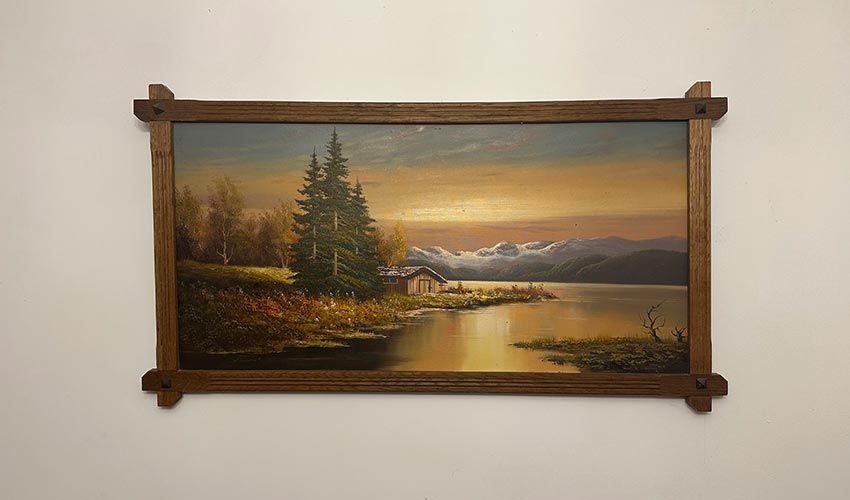What Japan & Ma can Teach about Minimalism
In a world filled with constant noise and distractions, the pursuit of a peaceful and balanced life has become a universal aspiration. You may think running Ancient Purity is the most incredible job, a lot of it is managing things, planning, replying to many messages, things go wrong, it's a business. We also have a building full of products , then a warehouse full of boxes, then we have a shop. It's just a lot of stuff, so I wanted to have a really bare house, a clear space and have as I've learned... "Ma". Rather than listening to the trends of Minimalism, I turned to the ancient world of Japan. I see it is embedded in their culture, the houses, the designs, the restaurants. These people have been doing it for lifetimes, so I looked to them for inspiration. So this is all I learned and how to apply it.
Japanese Minimalism and Zen holistic teachings offer a profound approach to achieving harmony, not only within ourselves but also in our living spaces. By incorporating these philosophies into our homes, we can create an environment that fosters tranquility, mindfulness, and simplicity. In this article, we will delve into the principles of Japanese minimalism and Zen holistic teachings and explore how they can transform your living space into a sanctuary of serenity and beauty. Japanese minimalism, also known as "minimalist living" or "Zen minimalism," is rooted in Zen Buddhism and traditional Japanese aesthetics. At its core, it is a philosophy that celebrates simplicity, functionality, and the elimination of unnecessary clutter. The Japanese concept of Ma offers a profound perspective on achieving this equilibrium. Rooted in art, architecture, and even language, Ma encourages us to recognise the beauty in the spaces between things, reminding us that silence and stillness are as important as sound and motion.

Understanding Ma
I absolutely love the concept of Ma, when I heard it, it resonated with me... Of course!, it makes sense, I felt that about space. Ma, pronounced "Mah," is a multifaceted term in Japanese culture, encompassing the idea of "space" or "gap." However, Ma goes beyond physical space; it represents the pause, the interval, the emptiness between objects, thoughts, or moments. Ma is not a void to be filled but an essential element that allows for context, balance, and meaning to emerge. It invites us to see the beauty in the spaces between moments, objects, and thoughts. By incorporating Ma into our lives, we can find balance, mindfulness, and a deeper appreciation for the harmony that emerges from the interplay of presence and absence.
In Architecture and Design: In Japanese architecture, Ma is evident in the design of traditional spaces such as tea rooms, gardens, and temples. It influences the arrangement of elements, creating a sense of balance and serenity. Ma encourages the use of negative space, where the absence of objects is as important as their presence, fostering a feeling of openness and tranquility.
In Art and Calligraphy: Ma is a fundamental principle in traditional Japanese arts like Ikebana (flower arranging) and Sumi-e (ink painting). These arts utilise the empty space to create a harmonious composition. In calligraphy Ma is the pause between brush strokes, a moment of reflection that contributes to the overall beauty of the characters.
In Language: Ma is present in the Japanese language itself. Pauses in speech and writing are essential to convey meaning and nuance. The concept extends to interpersonal relationships, where the unspoken can be as significant as the spoken.

Applying Ma to your Life
Now that we've explored the essence of Ma, let's consider how we can incorporate this concept into our daily lives:
Mindful Presence: Embrace moments of stillness and silence in your daily routine. Whether it's taking a pause during a busy day or spending a few minutes in meditation, these intervals allow you to reconnect with yourself and your surroundings.
Simplicity & Minimalism: Ma encourages simplicity and minimalism. Take time to declutter your physical space, removing unnecessary items that create visual and mental noise. Simplify your life by focusing on what truly matters.
Balance in Relationships: In our interactions with others, Ma reminds us to listen actively and be present in conversations. Pay attention not only to what is said but also to the unspoken emotions and thoughts. Allow for pauses to process information and respond thoughtfully.
Creativity & Innovation: Ma can foster creativity and innovation by encouraging us to explore the spaces between ideas. Don't rush to fill every gap with information or activity; instead, give your thoughts and ideas room to breathe and evolve.
Nature & Environment: Spend time in nature, where Ma is abundant. I stare across the fields from my house, but also when I drive across the fields and valleys. So observe the spaces between trees, the pauses in bird songs, and the stillness of water. These moments in nature can be deeply rejuvenating and inspiring.

The Essence of Japanese Minimalism
Japanese Minimalism, also known as "minimalist living" or "Zen Minimalism," is rooted in Zen Buddhism and traditional Japanese aesthetics. At its core, it is a philosophy that celebrates simplicity, functionality, and the elimination of unnecessary clutter. Here are some key principles of Japanese minimalism:
Less is More: The central tenet of Japanese minimalism is the belief that less is more. It encourages us to declutter our homes and lives, keeping only the things that truly serve a purpose or bring us joy. By doing so, we create a space that is unburdened by excess possessions.
Functional Design: Japanese minimalism emphasizes functional design and the use of space. Furniture and decor should have a purpose, and their design should be rooted in simplicity. Each item should contribute to the overall harmony of the space.
Natural Elements: A connection with nature is integral to Japanese minimalism. Incorporating natural materials like wood, stone, and bamboo into your home brings a sense of tranquility and balance. Natural light is also highly valued, so maximize the use of windows and open spaces.
Mindfulness: Living mindfully is a fundamental aspect of Japanese minimalism. It encourages us to be present in our daily activities and appreciate the beauty in simplicity. Mindful living not only reduces stress but also enhances our appreciation for the small joys of life.

Apply these Zen Teachings for the Home
Zen, a form of Mahayana Buddhism, plays a significant role in Japanese culture and aesthetics. Zen holistic teachings extend beyond minimalism to encompass a deeper sense of inner peace and mindfulness. Follow a path to creating a home that is not just aesthetically pleasing but also a source of peace and balance in your busy life. By embracing these philosophies, we can cultivate an environment that promotes mindfulness, simplicity, and a deep sense of connection with the world around us. So, whether you are looking to redesign your entire living space or make small changes, consider incorporating the wisdom of Japanese minimalism and Zen into your home – it may just transform your life in incredible ways. Here's how you can infuse your home with Zen principles:
Meditation Space: Create a dedicated meditation space in your home, even if it's just a small corner. Incorporate elements like a cushion, incense, and a simple altar with a few meaningful objects. This space serves as a reminder to pause, breathe, and find stillness amidst the chaos of everyday life.
Harmony & Balance: Use the principles of yin and yang to create balance in your home. Balance dark and light colors, soft and hard textures, and empty spaces with focal points. Achieving harmony in your decor can evoke a sense of peace and unity.
Incorporate Natural Sounds: The soothing sounds of nature, like flowing water or wind chimes, can bring a sense of tranquility to your space. Consider adding a tabletop fountain or hanging wind chimes near a window.
Minimalist Decor: Embrace minimalism in your decor choices, opting for simplicity over extravagance. A single, carefully chosen piece of artwork or a well-placed flower arrangement can be more impactful than a cluttered collection.
Practical Zen Gardens: If space allows, create a small Zen garden in your backyard or even indoors with a miniature Zen garden kit. Raked sand, rocks, and carefully placed elements can evoke a sense of serenity and mindfulness.

The Art of Simplicity: How the Japanese Keep a Tidy and Simple Home"
Finally I want to share some tips on ridding the clutter and chaos. Perhaps this part should of been at the start, but in the spirit of Zen, all is perfect. The Japanese have mastered the art of maintaining a tidy and simple home that radiates tranquility and harmony. Rooted in centuries-old cultural and philosophical principles, Japanese home organisation goes beyond mere cleanliness; it reflects a profound commitment to simplicity, mindfulness, and respect for one's living space. Japanese Minimalism is at the heart of their home organisation philosophy. It's a belief that less is more, emphasising the importance of reducing clutter and keeping only what is essential and meaningful. Japanese households tend to have a limited number of possessions, carefully chosen to serve a specific purpose or bring joy. I personally believe this is essential for a happy, healthy life. I do follow these practices myself, here they are.
Regular Decluttering: One of the key practices in Japanese home organisation is regular decluttering or "suteru" (to discard). Japanese families often go through their belongings, seasonally or annually, and remove items that are no longer needed or valued. This ritual ensures that the home remains free of excess and that everything has its place.
The Art of Folding - KonMari Method: Marie Kondo is a Japanese organising consultant, introduced the world to the KonMari Method, which has gained international acclaim. I tried to watch the documentary about her but got bored reading the subtitles, however I believe it may help you so take a look. Anyway central to this method is the art of folding clothes, a practice that transforms closets and drawers into orderly, visually pleasing spaces. This technique also fosters a deep connection with one's belongings, as each item is treated with care and respect. Sounds so simple and obvious, there really is more to it. Try it.
Designing with Purpose: Japanese homes are designed with a focus on functionality and simplicity. Multi-purpose furniture and built-in storage solutions are common. For example, "tansu" cabinets are traditional Japanese chests of drawers that combine elegant design with efficient storage.
Everything in Its Place: The Japanese have a saying, "A place for everything, and everything in its place." This adage reflects the meticulous organization of their homes. Items are stored in a way that maximizes accessibility and minimizes clutter. Labeling and categorizing also play a significant role in ensuring that each item is easy to find and put away.
Respect for Space: Japanese culture places great importance on respecting one's living space. Shoes are removed at the entrance to prevent dirt from being tracked inside. Furniture and decor are thoughtfully arranged to create a sense of harmony and balance. This respect for space extends to caring for and maintaining the home in impeccable condition.
Mindfulness in Daily Chores: Japanese families approach daily chores with mindfulness. Tasks like cleaning, cooking, and even setting the table are seen as opportunities for meditation and reflection. This mindfulness enhances the experience of performing these activities and contributes to the overall sense of simplicity and order in the home.
In closing I was going to add a quote that I liked but suddenly I remembered my great friend Anton Raps, whom I met travelling back in, well maybe 2006 or 07 who knows. Anyway he had taken to a life of adventure. With no stuff with him. He simply said this and I'll leave you with it.
"My possessions, were starting to possess me" - Anton Raps (Visionary)















